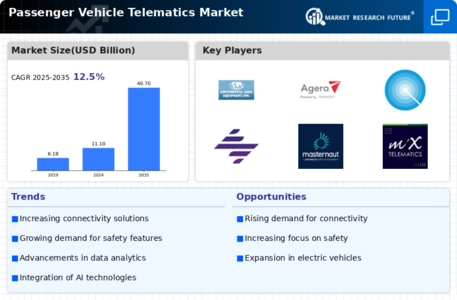Automatic Crash Notification
Emergency Calling
Navigation
On-Road Assistance
Remote Diagnostics
On-Road Assistance
Vehicle Tracking/Recovery (Fleet Management)
Insurance Risk Assessment
Driver Behaviour
Billing Services
Others (Fuel efficiency Guidance, Geo-Fencing, Eco Driving)
Telematic Control Unit
Navigation Systems
Communication Devices
Audio/Video Interface
CAN Bus
Embedded
Tethered
Integrated
Passenger Car
LCV
Truck
Bus
Satellite
Cellular
Passenger Car/Aftermarket
LCV Aftermarket
HCV Aftermarket
Consulting
Implementation
Maintenance
Automatic Crash Notification
Emergency Calling
Navigation
On-Road Assistance
Remote Diagnostics
On-Road Assistance
Vehicle Tracking/Recovery (Fleet Management)
Insurance Risk Assessment
Driver Behaviour
Billing Services
Others (Fuel efficiency Guidance, Geo-Fencing, Eco Driving)
Telematic Control Unit
Navigation Systems
Communication Devices
Audio/Video Interface
CAN Bus
Embedded
Tethered
Integrated
Passenger Car
LCV
Truck
Bus
Satellite
Cellular
Passenger Car/Aftermarket
LCV Aftermarket
HCV Aftermarket
Consulting
Implementation
Maintenance
Automatic Crash Notification
Emergency Calling
Navigation
On-Road Assistance
Remote Diagnostics
On-Road Assistance
Vehicle Tracking/Recovery (Fleet Management)
Insurance Risk Assessment
Driver Behaviour
Billing Services
Others (Fuel efficiency Guidance, Geo-Fencing, Eco Driving)
Telematic Control Unit
Navigation Systems
Communication Devices
Audio/Video Interface
CAN Bus
Embedded
Tethered
Integrated
Passenger Car
LCV
Truck
Bus
Satellite
Cellular
Passenger Car/Aftermarket
LCV Aftermarket
HCV Aftermarket
Consulting
Implementation
Maintenance
Automatic Crash Notification
Emergency Calling
Navigation
On-Road Assistance
Remote Diagnostics
On-Road Assistance
Vehicle Tracking/Recovery (Fleet Management)
Insurance Risk Assessment
Driver Behaviour
Billing Services
Others (Fuel efficiency Guidance, Geo-Fencing, Eco Driving)
Telematic Control Unit
Navigation Systems
Communication Devices
Audio/Video Interface
CAN Bus
Embedded
Tethered
Integrated
Passenger Car
LCV
Truck
Bus
Satellite
Cellular
Passenger Car/Aftermarket
LCV Aftermarket
HCV Aftermarket
Consulting
Implementation
Maintenance
Automatic Crash Notification
Emergency Calling
Navigation
On-Road Assistance
Remote Diagnostics
On-Road Assistance
Vehicle Tracking/Recovery (Fleet Management)
Insurance Risk Assessment
Driver Behaviour
Billing Services
Others (Fuel efficiency Guidance, Geo-Fencing, Eco Driving)
Telematic Control Unit
Navigation Systems
Communication Devices
Audio/Video Interface
CAN Bus
Embedded
Tethered
Integrated
Passenger Car
LCV
Truck
Bus
Satellite
Cellular
Passenger Car/Aftermarket
LCV Aftermarket
HCV Aftermarket
Consulting
Implementation
Maintenance
Germany Outlook (USD Billion, 2018-2032)
Automatic Crash Notification
Emergency Calling
Navigation
On-Road Assistance
Remote Diagnostics
On-Road Assistance
Vehicle Tracking/Recovery (Fleet Management)
Insurance Risk Assessment
Driver Behaviour
Billing Services
Others (Fuel efficiency Guidance, Geo-Fencing, Eco Driving)
Telematic Control Unit
Navigation Systems
Communication Devices
Audio/Video Interface
CAN Bus
Embedded
Tethered
Integrated
Passenger Car
LCV
Truck
Bus
Satellite
Cellular
Passenger Car/Aftermarket
LCV Aftermarket
HCV Aftermarket
Consulting
Implementation
Maintenance
Automatic Crash Notification
Emergency Calling
Navigation
On-Road Assistance
Remote Diagnostics
On-Road Assistance
Vehicle Tracking/Recovery (Fleet Management)
Insurance Risk Assessment
Driver Behaviour
Billing Services
Others (Fuel efficiency Guidance, Geo-Fencing, Eco Driving)
Telematic Control Unit
Navigation Systems
Communication Devices
Audio/Video Interface
CAN Bus
Embedded
Tethered
Integrated
Passenger Car
LCV
Truck
Bus
Satellite
Cellular
Passenger Car/Aftermarket
LCV Aftermarket
HCV Aftermarket
Consulting
Implementation
Maintenance
Automatic Crash Notification
Emergency Calling
Navigation
On-Road Assistance
Remote Diagnostics
On-Road Assistance
Vehicle Tracking/Recovery (Fleet Management)
Insurance Risk Assessment
Driver Behaviour
Billing Services
Others (Fuel efficiency Guidance, Geo-Fencing, Eco Driving)
Telematic Control Unit
Navigation Systems
Communication Devices
Audio/Video Interface
CAN Bus
Embedded
Tethered
Integrated
Passenger Car
LCV
Truck
Bus
Satellite
Cellular
Passenger Car/Aftermarket
LCV Aftermarket
HCV Aftermarket
Consulting
Implementation
Maintenance
Automatic Crash Notification
Emergency Calling
Navigation
On-Road Assistance
Remote Diagnostics
On-Road Assistance
Vehicle Tracking/Recovery (Fleet Management)
Insurance Risk Assessment
Driver Behaviour
Billing Services
Others (Fuel efficiency Guidance, Geo-Fencing, Eco Driving)
Telematic Control Unit
Navigation Systems
Communication Devices
Audio/Video Interface
CAN Bus
Embedded
Tethered
Integrated
Passenger Car
LCV
Truck
Bus
Satellite
Cellular
Passenger Car/Aftermarket
LCV Aftermarket
HCV Aftermarket
Consulting
Implementation
Maintenance
Automatic Crash Notification
Emergency Calling
Navigation
On-Road Assistance
Remote Diagnostics
On-Road Assistance
Vehicle Tracking/Recovery (Fleet Management)
Insurance Risk Assessment
Driver Behaviour
Billing Services
Others (Fuel efficiency Guidance, Geo-Fencing, Eco Driving)
Telematic Control Unit
Navigation Systems
Communication Devices
Audio/Video Interface
CAN Bus
Embedded
Tethered
Integrated
Passenger Car
LCV
Truck
Bus
Satellite
Cellular
Passenger Car/Aftermarket
LCV Aftermarket
HCV Aftermarket
Consulting
Implementation
Maintenance
Automatic Crash Notification
Emergency Calling
Navigation
On-Road Assistance
Remote Diagnostics
On-Road Assistance
Vehicle Tracking/Recovery (Fleet Management)
Insurance Risk Assessment
Driver Behaviour
Billing Services
Others (Fuel efficiency Guidance, Geo-Fencing, Eco Driving)
Telematic Control Unit
Navigation Systems
Communication Devices
Audio/Video Interface
CAN Bus
Embedded
Tethered
Integrated
Passenger Car
LCV
Truck
Bus
Satellite
Cellular
Passenger Car/Aftermarket
LCV Aftermarket
HCV Aftermarket
Consulting
Implementation
Maintenance
Automatic Crash Notification
Emergency Calling
Navigation
On-Road Assistance
Remote Diagnostics
On-Road Assistance
Vehicle Tracking/Recovery (Fleet Management)
Insurance Risk Assessment
Driver Behaviour
Billing Services
Others (Fuel efficiency Guidance, Geo-Fencing, Eco Driving)
Telematic Control Unit
Navigation Systems
Communication Devices
Audio/Video Interface
CAN Bus
Embedded
Tethered
Integrated
Passenger Car
LCV
Truck
Bus
Satellite
Cellular
Passenger Car/Aftermarket
LCV Aftermarket
HCV Aftermarket
Consulting
Implementation
Maintenance
Automatic Crash Notification
Emergency Calling
Navigation
On-Road Assistance
Remote Diagnostics
On-Road Assistance
Vehicle Tracking/Recovery (Fleet Management)
Insurance Risk Assessment
Driver Behaviour
Billing Services
Others (Fuel efficiency Guidance, Geo-Fencing, Eco Driving)
Telematic Control Unit
Navigation Systems
Communication Devices
Audio/Video Interface
CAN Bus
Embedded
Tethered
Integrated
Passenger Car
LCV
Truck
Bus
Satellite
Cellular
Passenger Car/Aftermarket
LCV Aftermarket
HCV Aftermarket
Consulting
Implementation
Maintenance
Automatic Crash Notification
Emergency Calling
Navigation
On-Road Assistance
Remote Diagnostics
On-Road Assistance
Vehicle Tracking/Recovery (Fleet Management)
Insurance Risk Assessment
Driver Behaviour
Billing Services
Others (Fuel efficiency Guidance, Geo-Fencing, Eco Driving)
Telematic Control Unit
Navigation Systems
Communication Devices
Audio/Video Interface
CAN Bus
Embedded
Tethered
Integrated
Passenger Car
LCV
Truck
Bus
Satellite
Cellular
Passenger Car/Aftermarket
LCV Aftermarket
HCV Aftermarket
Consulting
Implementation
Maintenance
Automatic Crash Notification
Emergency Calling
Navigation
On-Road Assistance
Remote Diagnostics
On-Road Assistance
Vehicle Tracking/Recovery (Fleet Management)
Insurance Risk Assessment
Driver Behaviour
Billing Services
Others (Fuel efficiency Guidance, Geo-Fencing, Eco Driving)
Telematic Control Unit
Navigation Systems
Communication Devices
Audio/Video Interface
CAN Bus
Embedded
Tethered
Integrated
Passenger Car
LCV
Truck
Bus
Satellite
Cellular
Passenger Car/Aftermarket
LCV Aftermarket
HCV Aftermarket
Consulting
Implementation
Maintenance
Automatic Crash Notification
Emergency Calling
Navigation
On-Road Assistance
Remote Diagnostics
On-Road Assistance
Vehicle Tracking/Recovery (Fleet Management)
Insurance Risk Assessment
Driver Behaviour
Billing Services
Others (Fuel efficiency Guidance, Geo-Fencing, Eco Driving)
Telematic Control Unit
Navigation Systems
Communication Devices
Audio/Video Interface
CAN Bus
Embedded
Tethered
Integrated
Passenger Car
LCV
Truck
Bus
Satellite
Cellular
Passenger Car/Aftermarket
LCV Aftermarket
HCV Aftermarket
Consulting
Implementation
Maintenance
Automatic Crash Notification
Emergency Calling
Navigation
On-Road Assistance
Remote Diagnostics
On-Road Assistance
Vehicle Tracking/Recovery (Fleet Management)
Insurance Risk Assessment
Driver Behaviour
Billing Services
Others (Fuel efficiency Guidance, Geo-Fencing, Eco Driving)
Telematic Control Unit
Navigation Systems
Communication Devices
Audio/Video Interface
CAN Bus
Embedded
Tethered
Integrated
Passenger Car
LCV
Truck
Bus
Satellite
Cellular
Passenger Car/Aftermarket
LCV Aftermarket
HCV Aftermarket
Consulting
Implementation
Maintenance
Automatic Crash Notification
Emergency Calling
Navigation
On-Road Assistance
Remote Diagnostics
On-Road Assistance
Vehicle Tracking/Recovery (Fleet Management)
Insurance Risk Assessment
Driver Behaviour
Billing Services
Others (Fuel efficiency Guidance, Geo-Fencing, Eco Driving)
Telematic Control Unit
Navigation Systems
Communication Devices
Audio/Video Interface
CAN Bus
Embedded
Tethered
Integrated
Passenger Car
LCV
Truck
Bus
Satellite
Cellular
Passenger Car/Aftermarket
LCV Aftermarket
HCV Aftermarket
Consulting
Implementation
Maintenance
Automatic Crash Notification
Emergency Calling
Navigation
On-Road Assistance
Remote Diagnostics
On-Road Assistance
Vehicle Tracking/Recovery (Fleet Management)
Insurance Risk Assessment
Driver Behaviour
Billing Services
Others (Fuel efficiency Guidance, Geo-Fencing, Eco Driving)
Telematic Control Unit
Navigation Systems
Communication Devices
Audio/Video Interface
CAN Bus
Embedded
Tethered
Integrated
Passenger Car
LCV
Truck
Bus
Satellite
Cellular
Passenger Car/Aftermarket
LCV Aftermarket
HCV Aftermarket
Consulting
Implementation
Maintenance
Automatic Crash Notification
Emergency Calling
Navigation
On-Road Assistance
Remote Diagnostics
On-Road Assistance
Vehicle Tracking/Recovery (Fleet Management)
Insurance Risk Assessment
Driver Behaviour
Billing Services
Others (Fuel efficiency Guidance, Geo-Fencing, Eco Driving)
Telematic Control Unit
Navigation Systems
Communication Devices
Audio/Video Interface
CAN Bus
Embedded
Tethered
Integrated
Passenger Car
LCV
Truck
Bus
Satellite
Cellular
Passenger Car/Aftermarket
LCV Aftermarket
HCV Aftermarket
Consulting
Implementation
Maintenance
Automatic Crash Notification
Emergency Calling
Navigation
On-Road Assistance
Remote Diagnostics
On-Road Assistance
Vehicle Tracking/Recovery (Fleet Management)
Insurance Risk Assessment
Driver Behaviour
Billing Services
Others (Fuel efficiency Guidance, Geo-Fencing, Eco Driving)
Telematic Control Unit
Navigation Systems
Communication Devices
Audio/Video Interface
CAN Bus
Embedded
Tethered
Integrated
Passenger Car
LCV
Truck
Bus
Satellite
Cellular
Passenger Car/Aftermarket
LCV Aftermarket
HCV Aftermarket
Consulting
Implementation
Maintenance

















Leave a Comment